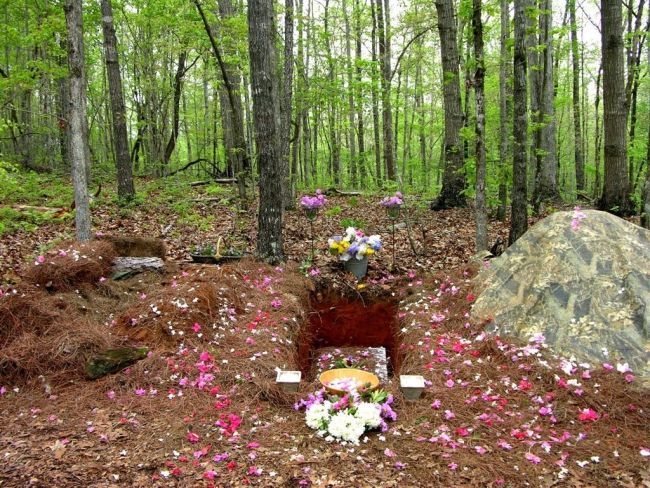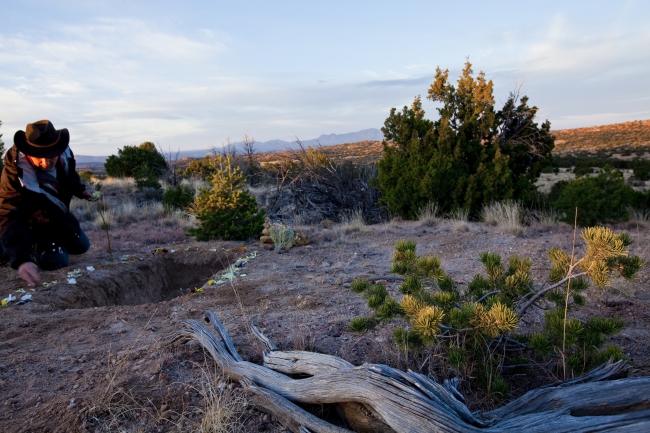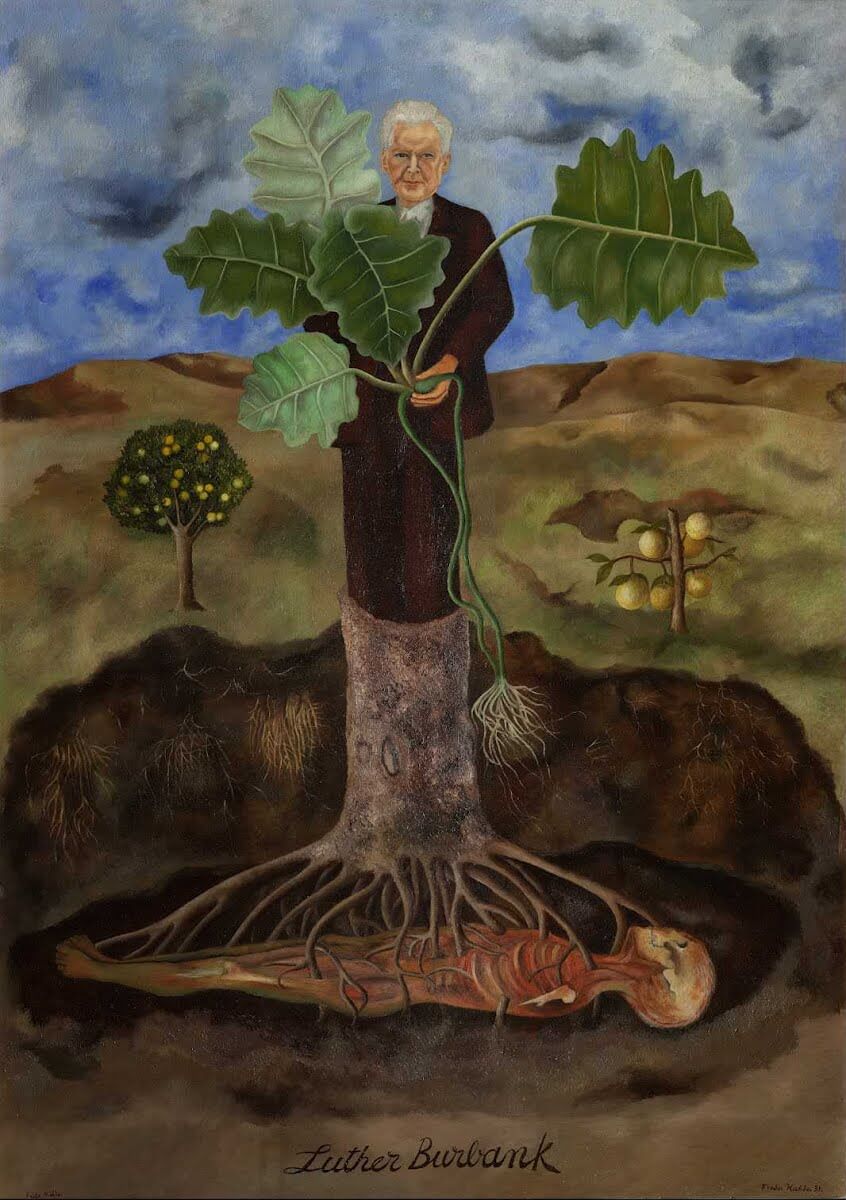We get it. For the environmentally focused future corpse, becoming a tree is, simply put, afterlife goals.
Trees are an invaluable part of the carbon cycle. While planting a bunch of trees alone won’t slow climate change (at least not without a substantial reduction in greenhouse gas emissions) trees increase biodiversity and do their part to capture carbon.
Perhaps even more important is the societal shift that comes with asking, “how can I become a tree?” With no intervention, the human body decomposes after death. Yet for over a century, modern funeral practices have attempted to slow decomposition and lock the nutrients a body can provide into metal and concrete boxes below ground. Choosing to forego the expensive interventions of the funeral industry is humanity’s attempt to re-identify with the natural world and view our bodies as biomass and organic material.
As a final bonus, there is emerging evidence that trees possess a form of cooperation and communication, connecting underground through fungal networks (colloquially known as the wood-wide web.) For those of us without strong religious beliefs, becoming part of a plant that will continue to thrive and communicate for years after we die is a kind of immortality we may never have dreamed possible.
Whatever your reason for seeking ‘treedom’, the following are several methods to achieve your post mortem dreams.
Method: I want to be buried and have a tree planted over me.
The Facts
You are a purist! Put you straight into the soil and plant a tree over you. Seems simple enough, right? Not always.
Your local cemetery may require a vault to be placed around your body, cutting you off from the dirt (and any potential aid to a nearby tree). Using a vault is not the law – and don’t let anyone tell you otherwise – but part of the individual cemetery’s policy to help them maintain a level ground and make landscaping easier. Yes… really.
In seeking your cemetery it is best to look for the labels: green, natural, or conservation. These cemeteries are most likely to let you be buried naked in a simple shroud directly into the earth. As a note, some conventional cemeteries will have a small section that allow natural burials, so it doesn’t hurt to ask.
Even if you find a green cemetery, ask questions! Some cemeteries like to re-wild the land with native species and trees, but not all will be able to accommodate your specific request for a tree. (How do you feel about a shrub?) You may be required to select and pay for a specific location within the burial ground where a tree could successfully grow, so be sure to plan ahead.
A final option would be a home burial, which is technically legal in most states. We say technically because if you don’t have a cemetery already legally established on your property, you may need to invest a good deal of research, time, and expense. A good place to start is by checking in with your local zoning board.
Method: I want to be composted.
The Facts
Welcome to the exciting new world of human composting! Natural Organic Reduction (NOR), or human composting, became a legal option in the state of Washington in 2020. Since then, NOR has been legalized in Colorado and Oregon, with bills in process in several other states. NOR turns the body into nutrient rich soil, absolutely ideal for growing trees, flowers, whatever flora your heart desires.
If Recompose, a pioneer in the NOR field, is handling your NOR they can also arrange for you to become part of a forest by having your soil donated to Bells Mountain, a nonprofit land trust in southern Washington. The NOR there is used to nurture native trees and heal land destroyed by “years of abuse and extraction.”
Alternative
At this time, most of you will not reside in a state where NOR is an option. If you live in a neighboring state, you still might be able to fulfill your Future Tree goals if transport of remains across state lines does not require embalming. You can also help the Order in our continued quest to see this option legalized all over the world, hopefully available when you need it.
Method: I want to be put in one of those tree burial pods.
The Facts
Though this is a popular viral concept, it’s important to understand that this product, billed as a cozy death egg, nestling you in a fetal position into the earth, is conceptual and not actually available.
Capsula Mundi burial pods were designed in response to Italian laws that have made make un-casketed burial difficult.
Alternative
Most places don’t have laws requiring caskets for burial, so any sort of eco-casket would be unnecessary, as well as create an additional expense. The best option would be to return to the first option on this list: burial in a simple shroud, straight in the earth.
Method: I plan on using one of those cremated remains urns that will turn me into a tree.
The Facts
One of the most popular corpse to tree products is the Bios Urn, or similar urns, that promise to transform your loved one’s ashes into a tree, plant, flower, etc. But, can plants actually grow in ashes?
No.
While it can be a lovely idea to scatter your loved one’s ashes at the base of a tree or in the garden, this is more of a symbolic gesture, since cremated remains are inorganic and contain no trace of human DNA. You aren’t really “becoming a tree” post-cremation.
In addition, ashes aren’t really compatible with the micronutrients and environment necessary to facilitate healthy soil or plant growth. Some companies claim to have specially prepared the soil to counteract the harmful properties of the ashes, while others include a protective container or filter, which keeps the ashes separate from the soil and plant growth. But please do your own research before purchasing this type of urn.
Alternative
There are several makers of beautiful wooden urns, like Boyce Studio, that have an isolated space for ashes in the bottom section of the urn, while the top serves as a small “pot” for smaller plants like succulents, herbs, or cactus.
If cremation is the best option for you (financially it is often the least expensive choice, as well as being available almost everywhere) consider planting trees as a carbon offset to the cremation process and then scattering the ashes somewhere meaningful. Yes, even the base of a tree.



